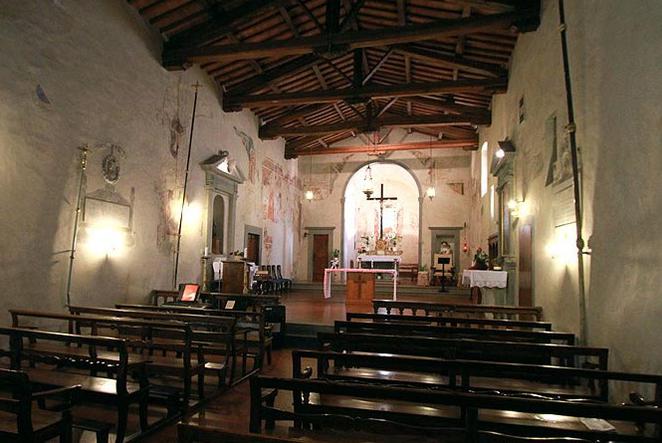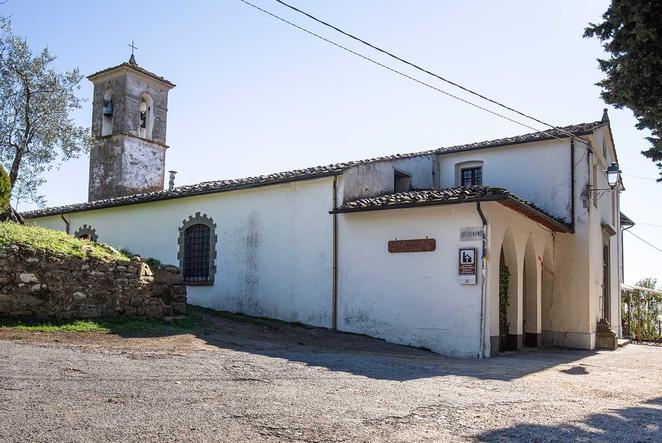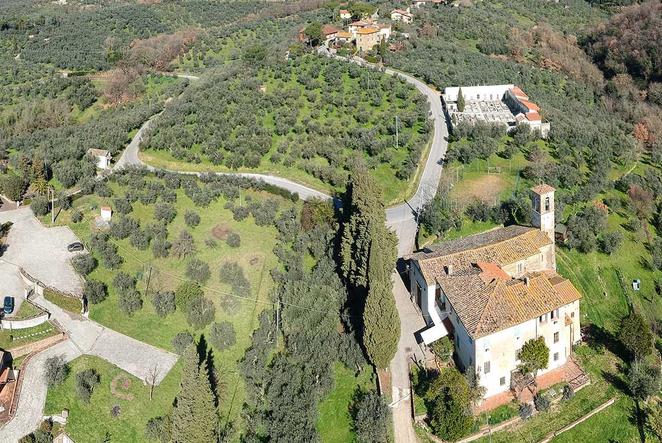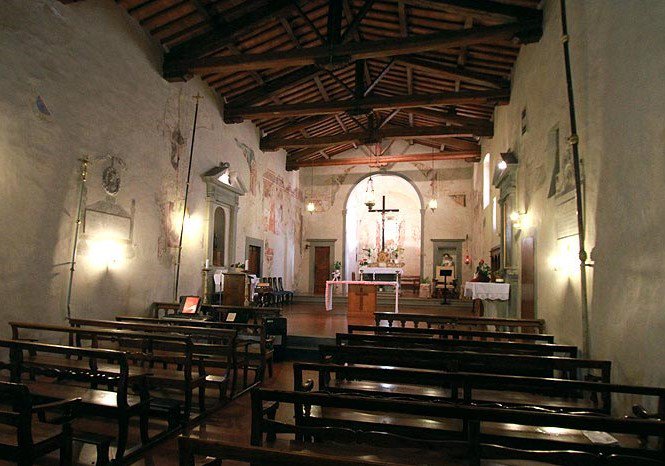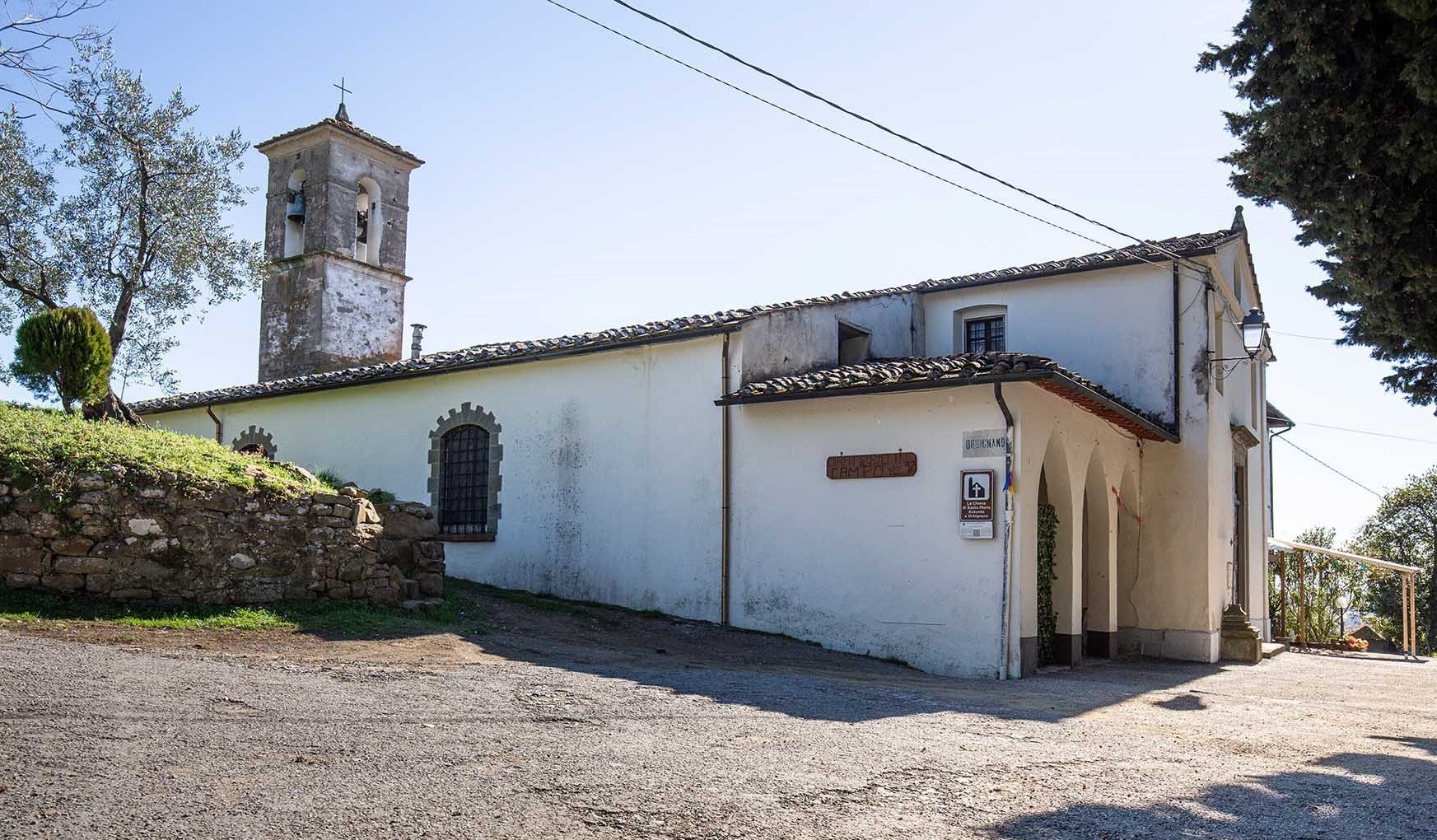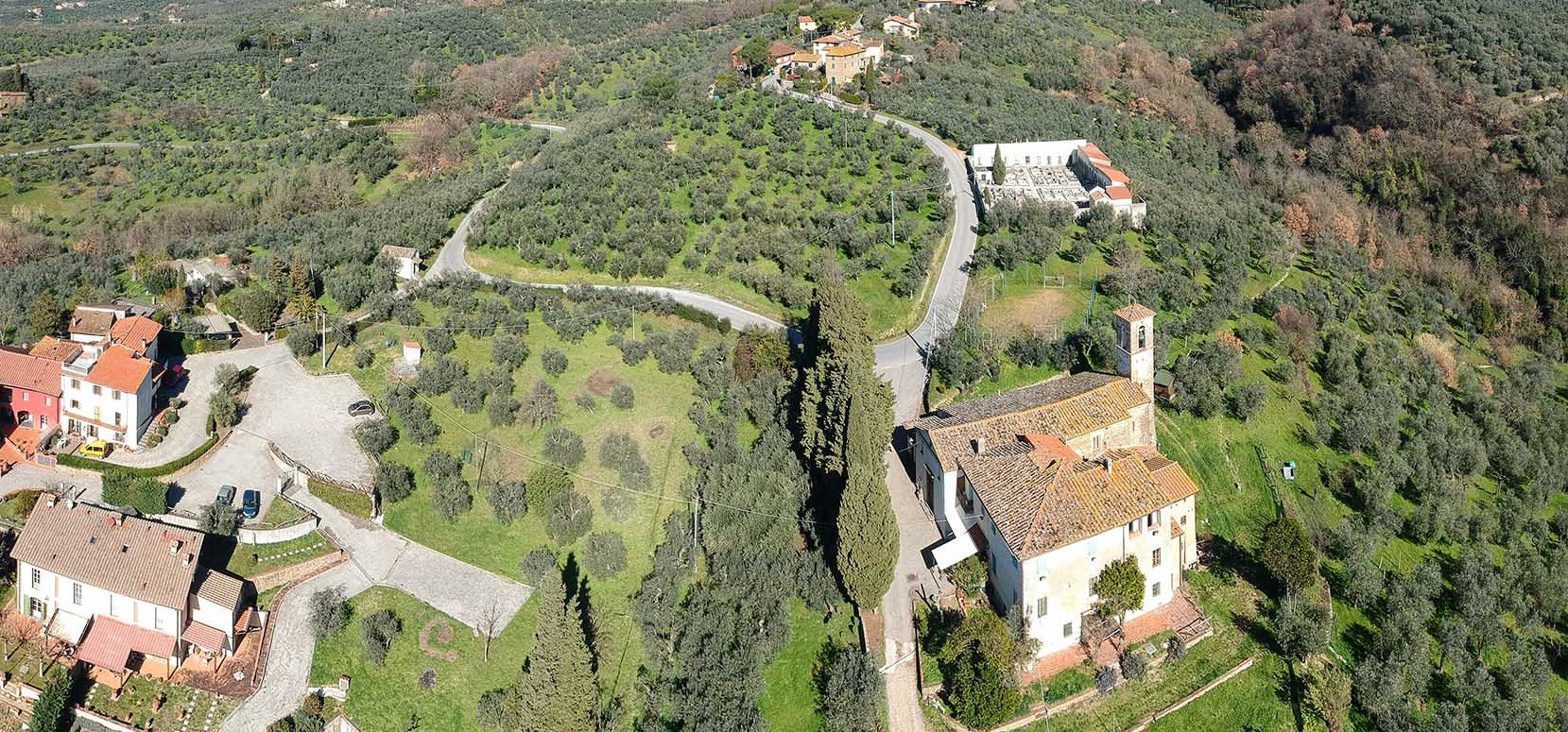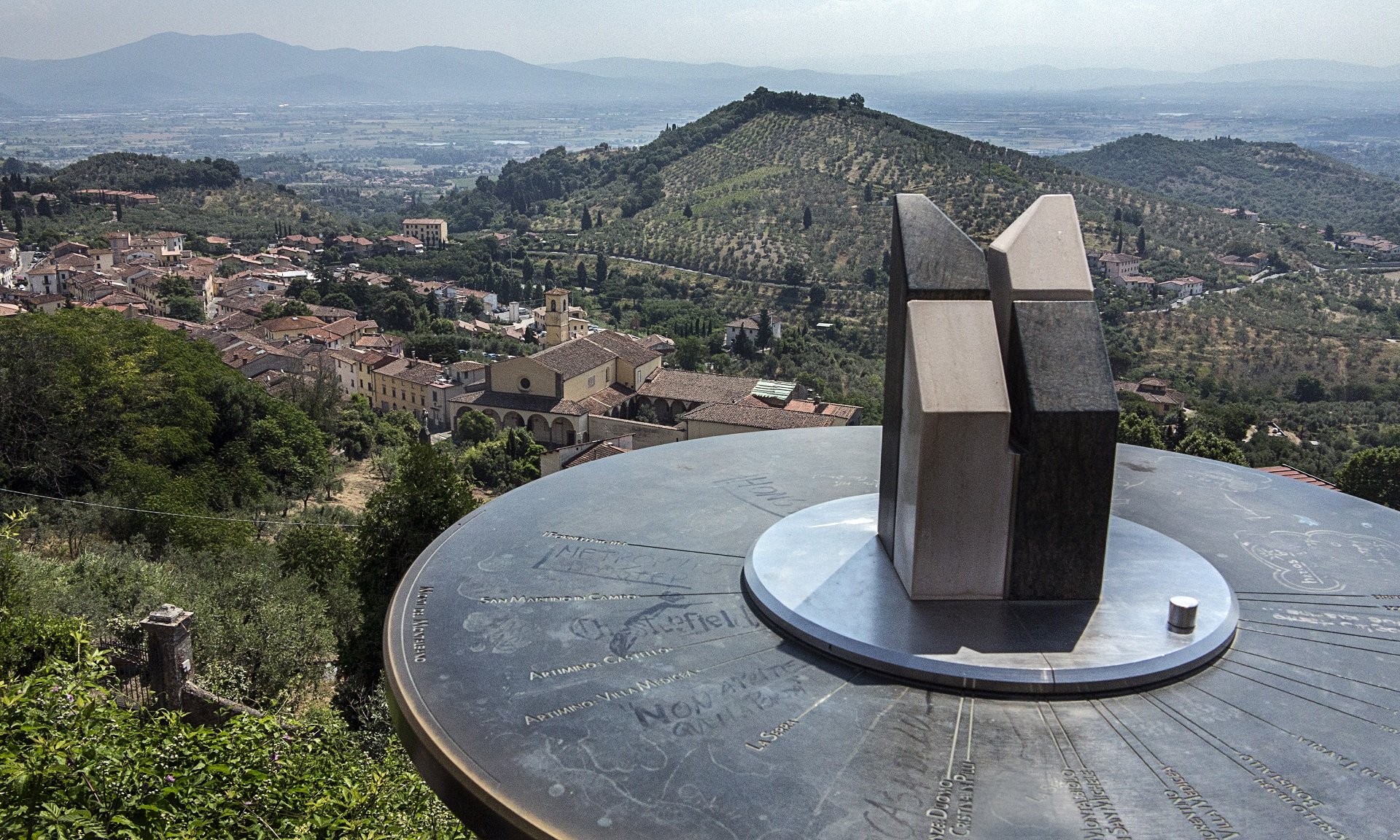Church of Santa Maria in Orbignano
There is reliable information about the church of Santa Maria Assunta al Pruno in Orbignano since 1276 when it appears among the suffragan churches of the parish church of Santo Stefano a Lamporigium (today Lamporecchio). But the remains of the Romanesque filaretto suggest more ancient origins.
The name 'al Pruno', on the other hand, is to be found in the sacred object that gives the popular name to the church, that is the Madonna and Child carved and painted on oak wood, precisely called 'del Pruno', which according to tradition was found in a bush of brambles (or blackthorns), after it had been stolen.
The Romanesque building, whose few remains are in the tribune, underwent a radical rearrangement and expansion in the first half of the 14th century with the growth of a deeply felt Marian cult; in this period the church was also popularly recognized as a sanctuary. The construction of a small cloister and the reconstruction of the rectory also date back to the 14th century. Further works were carried out in the post-war period and continued until the late 1970s.
On the left wall we find mainly Marian depictions. On the right wall and near the tribune three scenes depict the 'Nativity of Jesus' with the 'Adoration of the shepherds' and the 'Washing of the Infant'. These paintings surprisingly recall several details of Taddeo Gaddi's frescoes in the Baroncelli Chapel (1335) in the church of Santa Croce in Florence.
Another important work inside the building is a Carrara marble circular font in the shape of a floral chalice datable to the mid-fourteenth century for its evident Gothic taste.
Orbignano is also important for the bond between the parish territory and the Da Vinci family. In fact, in the 16th century one of Leonardo's brothers, Ser Domenico da Vinci, lived in Costareccia. In 1594, after his death, Leonardo's younger brother, Ser Lorenzo da Vinci, was buried in the cloister of the church of Orbignano.
Information
Address: Via Orbignanese, 1, Lamporecchio
Opening time: by reservation
Phone: 0573 82110
GPX coordinates: 43.8047550988,10.9201364556
